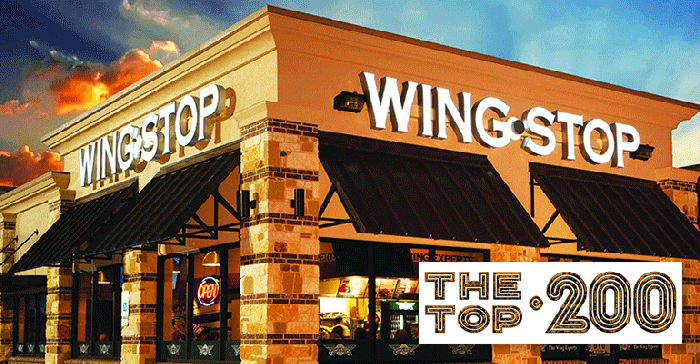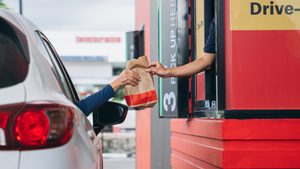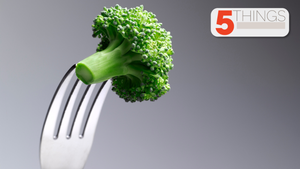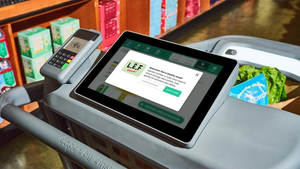UNCHARTED TERRITORY 2008
The last time retailers had to deal with significant food price inflation, Wal-Mart had fewer than 300 stores, consumers relied on grocers for more than 90% of their food purchases, and most supermarkets keyed prices manually at the checkout. Back then, pricing strategies were simple, said Jim Hertel, managing partner at Barrington, Ill.-based Willard Bishop. He said that in 1978, a retailer would
May 5, 2008
JULIE GALLAGHER
The last time retailers had to deal with significant food price inflation, Wal-Mart had fewer than 300 stores, consumers relied on grocers for more than 90% of their food purchases, and most supermarkets keyed prices manually at the checkout.
Back then, pricing strategies were simple, said Jim Hertel, managing partner at Barrington, Ill.-based Willard Bishop. He said that in 1978, a retailer would reason that “‘I have a 10% price increase from a supplier — I'll mark up the retail price by 10%, and I've covered myself on the cost of goods and taken margin on it, so my gross profit dollars are going up. What's wrong with that?’”

Now, 30 years later, the competitive terrain, the resources available to shoppers and the disproportionate impact of certain items on a retailer's pricing image are worlds away from what they once were. Economic pressures are also being compounded by the recession.
“What worked in 1978 isn't going to work now,” Hertel stressed. “If we were only dealing with the recession, that might be a benefit for supermarkets, since they already know how to merchandise to a trade-down phenomenon and make private label more prominent. The inflation is definitely the scarier of the two.”
But retailers are by no means helpless.
Penn Traffic, Syracuse, N.Y., has adopted a margin blending strategy to help insulate the pricing images of its P&C, Quality and BiLo banners.
“We are using what we call ‘wild buys,’ or controlled mark-down pricing on high-velocity products, to uniquely underscore and complement our promotional pricing image,” said Greg Young, chief executive officer of Penn Traffic, during a fourth-quarter earnings conference call last month. “Our objective is to remain very competitive, but not lowest-in-class pricing.”
Hertel recommends that other retailers explore adoption of the strategy, whereby retailers pass through only a portion of price increases on fast-moving products and make up the difference with less popular items.
“Let's say that you get a 10% increase passed on from a supplier — you might take 2% on a couple of SKUs in a segment that drives much of the price image, and then you might spread the rest across all of the other items in a vendor's line,” he said.
Retailers can also subsidize some of the higher costs being handed down from trading partners by narrowing the gap between the price of private-label and national-brand items.
“Somewhere around a 20% to a 22% price gap is a good rule for private-label, national-brand-equivalent price gaps,” said Hertel. “In reality, the spread might be as broad as where the private label is priced a couple of pennies above the national brand, all the way to 55% to 65% below.”
The prices of Publix Super Markets' store-brand items fall into the range of around 10% to 30% below national-brand items, said Maria Brous, spokeswoman for the Lakeland, Fla.-based chain. Although she could not reveal whether or not Publix is narrowing its gap, Brous did relate that the retailer is absorbing a lot of the price increases it's being handed down from suppliers.
Still, she conceded that “it's impossible to sustain all of them, since we're a penny-for-profit business.”
The retailer is making it easy for shoppers to trade down to items in its private-label lines, risk-free, with its Publix Brand Challenge.
During each week of the promotion, shoppers can receive three designated store-brand items free when they purchase these items' national-brand counterparts. During one week last month, customers were invited to buy one box of Kellogg's Nutri-Grain Strawberry Cereal Bars and get one box of Publix Strawberry Fruit & Grain Bars free; buy one box of Kellogg's Special K Red Berries Cereal and get one box of Publix Crunchy Rice & Wheat with Strawberries Cereal free; and buy one box of Betty Crocker Shark Bites and get one box of Publix Sharks Snacks free.
“In previous years, the Publix Brand Challenge has run for six consecutive weeks,” said Brous. “This year, the challenges will run three different two-week time periods, totaling six weeks.”
Publix has not yet released the dates of when the next two of these two-week promotions will run, but it may be “saving” its promotions for tougher times.
According to John Lewis, president of ACNielsen North America, the current state of the food industry is only the tip of the iceberg.
“Consumer behavior is just beginning to change, and it's only going to accelerate,” he told SN. “This is just the beginning of unprecedented food price inflation — just the start — and it's really going to hammer home. We'll see prices rising now through the next six to 12 to 18 months.”
Though radical consumer behavior changes are not yet reflected in sales numbers, Nielsen has reported that consumers are making fewer shopping trips as they look for ways to combine errands and save money.
Supercenters are common destinations. They continue to show growth amid flat or declining indicators of trip frequency across other channels.
Penn Traffic's Young recognizes the trend.
“We are seeing the effect of softer consumer confidence, with shoppers consolidating trips to the grocery store and exhibiting behavior that is more driven by price than it has been historically,” he said. “This bodes well for our private-label Food Club store brand.”
Safeway shoppers, too, are relying more heavily on the retailer's highly successful O Organics and Eating Right corporate brands.
Growth in private-label lines at the retailer is outpacing that of national brands in its Center Store section by a whopping 6 to 1 ratio, Steve Burd, chairman, president and chief executive officer of the chain, reported in an earnings conference call last month. He deemed the news “the strongest evidence that consumers are trading down and looking for value.”
Despite skyrocketing commodity costs, Stop & Shop/Giant Food Stores plans to soldier on with expansion of its Value Improvement Program everyday low price strategy, which has been 70% implemented so far, according to chain spokesman Robert Keane. Industry observers note that VIP's reduced prices are supported by cooperation with manufacturers, sharper product selection and internal cost reductions.
“Although release dates aren't made public, we're working on a steady release strategy,” he said. “There are issues that affect the cost of food that are beyond any retailer's control, but we're doing our best to give customers the best value possible.”
Stop & Shop/Giant educates its shoppers with signs “explaining why prices have risen, and [by] reiterating our pledge to give them the best value we can,” said Keane.
The retailer may be able to stave off price increases on certain products that have especially long shelf lives, suggests Hertel.
“In an EDLP environment where a retailer is promotionally oriented and self-distributing, they've got the ability to forward-buy in advance of price increases,” he said. “That's obviously not going to be the case in all categories, but in laundry detergent and cooking oil, you can imagine how long those products can last.”
Offering aggressive sale prices on staple products is another way of drawing shoppers during the economic downturn.
“Having the right items on sale is a lot more important than having a lot of items on sale,” stressed Willard Bishop's March edition of its “Competitive Edge” newsletter.
Schenectady, N.Y.-based Price Chopper is leveraging the strategy. A recent sales circular featured a couple of buy-one, get-two-free offers, one featuring Freihofer's Split Top Bread and another the 100-ounce size of Dynamo Laundry Detergent. Price Chopper declined SN's request for comment.
“When BOGO offers are compelling and involve high-penetration items that have broad appeal, shoppers tend to bring their entire basket to the store,” noted Hertel. “Those are certainly high-penetration items, so my guess is that this is a winning promotion.”
Persuasive offers designed to keep consumers visiting their stores week after week were also launched first by Kroger, then by Supervalu and Roundy's.
The chains are offering recipients of economic stimulus checks 10% bonuses when they spend between $300 and $1,200 on the respective retailers' gift cards.
“People are very promotional now,” acknowledged Jeff Noddle, Supervalu's chairman and chief executive officer, in a fourth-quarter earnings conference call last month. “They are certainly being aggressive and [offering] a lot of marketing efforts to consumers.”
The retailer recently announced the chainwide introduction of its Wild Harvest natural and organic corporate brand.
Priced 15% below branded natural and organic items, the line will initially include such staples as pasta, sauces and cereal and eventually will include as many as 300 products across various categories.
About the Author
You May Also Like






